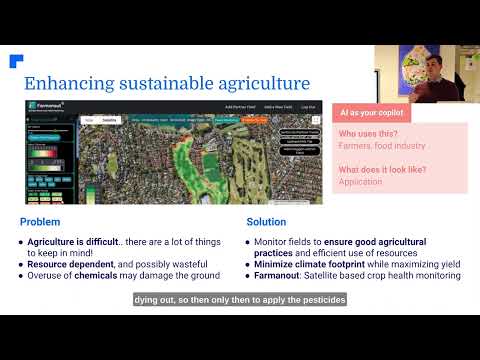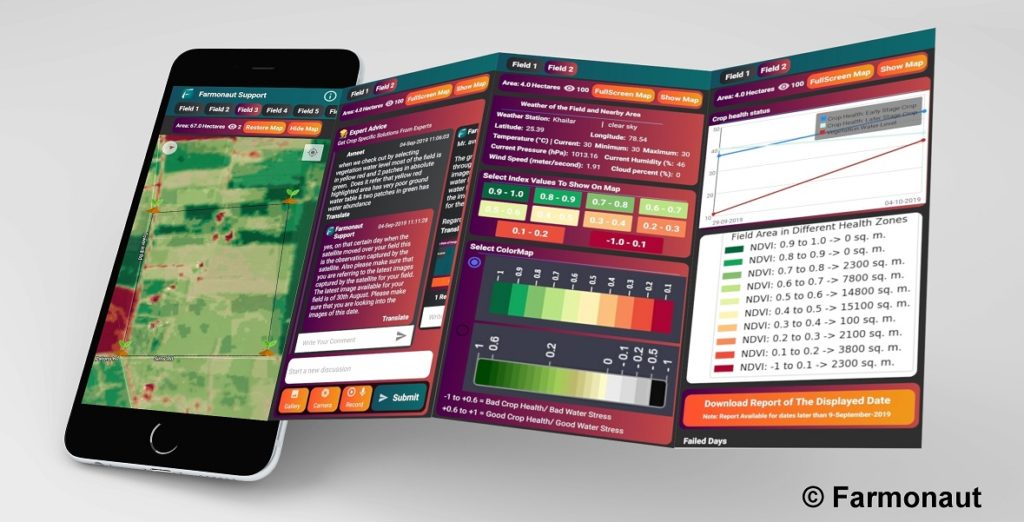Agricultural Soil Testing: Boost Yields in 7 Shocking Steps
“Soil testing can increase crop yields by up to 30% when combined with targeted nutrient management and sustainable practices.”
Overview: The Power of Soil Testing in Agriculture
Agricultural soil testing is a fundamental practice in modern farming, forestry, and land management. It is an essential tool for farmers and land managers who aim to improve crop yields, promote sustainable farming practices, and make informed decisions for long-term environmental stewardship. By analyzing soil properties—including nutrient levels, pH, organic matter content, and contaminants—we can develop effective strategies to enhance soil health and boost productivity.
In this guide, we take a comprehensive approach to agricultural soil testing:
- Dissecting its key components and soil health analysis
- Breaking down testing methods (lab, field, mobile, and advanced technologies)
- Walking through “7 shocking steps” to improve crop yields
- Exploring how Farmonaut’s digital solutions bring precision and sustainability to your farm operation
Whether you’re a progressive farmer, a land manager, or you manage large-scale commercial agriculture or forestry, understanding the benefits and techniques of soil nutrient analysis and health assessment is critical to success.
Understanding Soil Testing: What, Why, and How?
Soil testing involves collecting samples from different locations in a field or land parcel, examining their physical, chemical, and biological properties through rigorous analysis. But what does this mean for agricultural soil testing, and why should we care?
Why Soil Nutrient Analysis Matters
- Increase Productivity: Soil test results help us match nutrient application to crop need, increasing yields and minimizing input waste.
- Enhance Sustainability: Regular testing supports environmentally responsible farming practices by minimizing runoff and preventing over-application of fertilizers.
- Protect Soil Health: Early detection of imbalances, contaminants, or loss of fertility preserves long-term soil productivity and ecosystem function.
- Save Money: By knowing the actual levels of nutrients, we avoid unnecessary purchases and apply only what our crops truly need.
During the growing season, soil health assessment helps us monitor changes in root zone availability, moisture retention, and response to previous management practices. It is one of the most powerful, data-driven steps we can take in sustainable agriculture.
How Does Soil Testing Work?
Soil testing typically involves:
- Strategically collecting soil samples from various locations in your field
- Analyzing samples to assess physical (texture, density), chemical (nutrients, pH, contaminants), and biological properties (organic matter, microbial activity)
- Evaluating the results to guide fertilization and management decisions
The frequency of soil testing should be tailored to your crop rotation, previous cropping history, local conditions, and specific challenges—such as irrigation, salinity risk, or high-value crop demands.
Key Components of Soil Testing
To achieve accurate, actionable data, agricultural soil testing includes a deep dive into multiple characteristics. Let’s break them down:
1. Physical Properties
- Soil Texture: The proportion of sand, silt, and clay. Texture influences root penetration, water holding capacity, and nutrient retention.
- Bulk Density: A measurement of the weight of dry soil per unit volume. Low bulk density = more space for roots and water; high density restricts growth.
- Water Infiltration Rate: Affects how quickly water enters the soil surface, critical for irrigation efficiency.
- Aggregate Stability: The ability of soil aggregates to resist breaking apart. Stable aggregates promote good water retention, root growth, and protect against erosion.
2. Chemical Properties
- Macronutrient Content: Testing for nitrogen, phosphorus, potassium—essentials for plant development.
- Micronutrient Levels: Such as zinc, copper, boron, iron; required in trace amounts but critical for healthy crops.
- Soil pH: The balance of acidity/alkalinity. Soil pH testing impacts nutrient solubility and root uptake.
- Cation Exchange Capacity (CEC): Indicates how well soil holds onto essential nutrients, making them available for plant uptake.
- Electrical Conductivity: A measure of salinity, impacting plant water uptake and root health.
3. Biological Properties
- Soil Organic Matter Content: Indicates fertility and water holding capacity.
- Microbial Activity: Active microbial populations are a sign of healthy nutrient cycling.
- Presence of Beneficial Organisms: Earthworms, mycorrhizae, and decomposers contribute to soil structure and nutrient availability.
Soil Testing Methods: From Lab Analysis to Field Testing and Advanced Technologies
Our choice of soil testing methods depends on accuracy needs, time, and available resources. Let’s explore the options:
Laboratory Soil Analysis
- Comprehensive and Accurate: Soil samples are collected, air-dried, sieved, and sent to certified laboratories.
- Detailed Results: Laboratory soil analysis quantifies nutrient levels, pH, CEC, contaminants, and more.
- Turnaround Time: Best for pre-season planning and high-value or problem fields, though results may require several days.
Field Testing Kits
- On-Site, Fast, Portable: Ideal for spot-checking and rapid farmers’ decisions.
- Tests Key Parameters: Includes soil pH testing, texture, and electrical conductivity.
- Limitation: Field kits are practical but less precise than full laboratory analysis.
Advanced Soil Test Technologies
- Remote Sensing & Mobile Platforms: Leverage satellite and drone imaging to assess crop and soil variation across large or difficult fields.
- Example: Farmonaut’s satellite-based monitoring and real-time mobile soil analysis systems deliver high-resolution data; some tech reaches up to 97% accuracy for soil pH and trims turnaround from days to minutes. (arxiv.org)
-
Benefits:
- Rapid, scalable insights
- No need for physical sampling at every point
- Integrated with weather and resource data
Advanced tools such as those from Farmonaut (carbon footprinting and fleet management for field activities) help us monitor soil health and environmental impact on a field or landscape scale.
The Benefits of Agricultural Soil Testing: Why Every Farmer Needs Soil Health Assessment
Agricultural soil testing provides tangible benefits that underpin soil fertility management and sustainable farming practices:
- Optimized Fertilizer Application: Testing determines the precise nutrient requirements for each crop, saving money and reducing excess input.
- Enhanced Crop Yields & Quality: By addressing deficiencies and imbalances, soil test results help us nurture healthier plants and achieve higher yields.
- Environmental Sustainability: Testing and targeted application reduces nutrient runoff, leaching, and soil degradation, helping protect waterways and biodiversity.
- Early Issue Detection: Routine testing allows for timely correction of issues such as acidification, salinization, or the buildup of contaminants.
According to research, regular soil testing and the resulting management changes can increase yields by up to 30%, while also making the most efficient use of fertilizers and sustainable practices.
“Over 60% of global farmland suffers from nutrient imbalance, highlighting the urgent need for regular soil analysis.”
For farmers and businesses keen on demonstrating product authenticity and boosting consumer trust, Farmonaut’s blockchain-based product traceability records every step of the journey from the farm to the end consumer. This not only ensures transparency of your production practices but directly reflects your commitment to soil and crop health.
Boost Yields in 7 Shocking Steps—Your Actionable Soil Testing Plan
Here’s how we, as progressive land managers, can use soil testing to genuinely transform our crop yields and champion sustainability:
Step 1: Strategic Soil Sampling
- Plan Across Zones: Map your field; identify distinct management areas based on soil type, topography, past yield records, and visible crop variability.
- GPS or Marked Sampling: Use GPS points, drone maps, or Farmonaut’s digital platform to ensure consistent, accurate sampling locations—especially for large or commercial operations.
- Representative Samples: Collect enough samples from each area, mixing sub-samples for a composite that truly represents each zone.
Step 2: Proper Handling, Preparation, and Labeling
- Avoid Contamination: Always use clean tools, remove debris, and wear gloves if possible.
- Prepare for Lab: Air-dry and sieve samples before sending for laboratory soil analysis. Clearly label everything—you can even log details in the Farmonaut app.
Step 3: Comprehensive Soil Nutrient Analysis
- Test for the Full Suite: Macronutrients (N, P, K), micronutrients, pH, electrical conductivity, organic matter, CEC, and contaminants.
- Consider Advanced Testing: Use Farmonaut’s data-driven solutions to tap into remote sensing or digital crop health monitoring for large-scale fields.
Need automated soil data or want to integrate your soil health reports directly into your own dashboard? Leverage Farmonaut API for seamless data delivery—check out our API Developer Documentation for rapid integration!
Step 4: Analyze Biological Properties and Soil Health Indicators
- Evaluate Soil Life: Investigate organic matter, active microbial populations, and visible signs of beneficial organisms.
- Assess Soil Structure: Physical aggregate stability and root development are practical field checks.
Step 5: Interpret Soil Test Results
- Compare with Standards: Match findings to local agricultural guidelines and crop-specific optimum ranges.
- Account for Local Conditions: Consider rainfall, temperature, irrigation history, and even pollution sources.
Step 6: Develop a Tailored Soil Fertility Management Plan
- Apply Recommendations: Use test data to guide liming, fertilizer, manure, or organic amendment application.
- Adopt Sustainable Farming Practices: Rotate crops, plant cover crops, and minimize tillage where possible.
Step 7: Monitor Changes, Re-Test Regularly, and Adapt
- Continuous Assessment: Regular monitoring is vital, especially after implementing major practice changes.
- Adopt Smart Tech: Use Farmonaut’s live large-scale monitoring app for ongoing assessment of soil health, crop vigor, and resource use efficiency.
Soil Test Interpretation & Informed Management Decisions
The accuracy of your soil test interpretation is just as important as collecting representative samples. Here’s our approach:
- Calibration and Response: Relate your soil test levels to actual crop response through past records and agronomy recommendations (cropnutrition.com).
- Crop and Stage Matters: Recommendations differ for vegetables, legumes, cereals, or orchards; growth stage and expected weather play a role.
- Integrate All Insights: Cross-check physical, chemical, and biological data—sometimes nutrient lockout results from pH, not actual deficiency!
- Mainstream Sustainability: Incorporate organic amendments, reduced tillage, and rotation to improve nutrient cycling and organic carbon—see our carbon monitoring solution at Farmonaut Carbon Footprinting.
Soil Nutrient Deficiency, Effects, and Sustainable Management Table
| Nutrient | Common Deficiency Symptoms | Estimated Impact on Yield (%) | Sustainable Management Practices | Environmental Benefits |
|---|---|---|---|---|
| Nitrogen (N) | Pale green/yellow leaves, stunted growth, delayed maturity | Up to 50% |
|
|
| Phosphorus (P) | Purple/reddish leaves, poor root growth, weak stalks | 10-30% |
|
|
| Potassium (K) | Leaf edge browning, poor drought resistance, weak stems | Up to 20% |
|
|
| Zinc (Zn) | Chlorosis on younger leaves, leaf malformation, small leaves | Up to 15% |
|
|
| Boron (B) | Poor fruit/seed set, brittle new shoots | 5-10% |
|
|
| Iron (Fe) | Interveinal chlorosis on young leaves | Up to 8% |
|
|
| Sulphur (S) | Uniform yellowing of upper leaves, thin stalks | 5-10% |
|
|
Modern Solutions: Farmonaut’s Edge in Digital Soil Monitoring and Management
Incorporating precision agriculture tools doesn’t just change how we test soil—it transforms how we plan, track, and optimize our fields. Farmonaut uses advanced satellite imagery, AI, and machine learning to:
- Monitor real-time crop health and soil moisture to reduce nutrient stress and water waste
- Automate data collection for fields and management zones; analyze patterns too vast for manual scouting
- Provide instant advisory through mobile/web apps—integrated with weather and historic satellite data
- Enable blockchain-based traceability and satellite-backed crop/land insurance verification, unlocking new finance and risk management options
- Track and minimize carbon footprint for compliance and sustainability branding
Farmonaut’s platform scales from smallholder plots to regional monitoring, making accurate, actionable analysis available to individual farmers, institutions, and corporate agri-businesses worldwide.
With Android, iOS, and browser apps, adoption is easy for those seeking real-time insights and efficient, sustainable farm management strategies.
Challenges & Considerations: Maximizing the Value of Soil Testing
While the advantages of soil testing are many, we must also address potential barriers and best practices:
- Cost and Logistical Constraints: Frequent, comprehensive testing is an investment—focus your efforts where the return is highest (high-value crops, problem areas, new fields).
- Data Interpretation Skills: Accurate soil test interpretation requires knowledge—connect with local extension agents or use digital advisory tools like Farmonaut’s Jeevn AI to bridge knowledge gaps.
- Field Variability: Soils within the same field may differ in fertility, pH, or texture; zone-based testing helps refine management.
- Continuous Learning: Stay updated with the latest sustainable farming practices, digital monitoring solutions, and regional recommendations.
Collaboration and consistent monitoring are key. For those farming in regions with complex or highly variable soils, leverage digital mapping and monitoring to avoid costly missteps.
FAQ: Agricultural Soil Testing, Soil Nutrient Analysis, and Sustainable Practice
1. How often should we conduct soil testing?
Ideally, soil testing should be done at least every two to three years for most fields and every year for high-value or intensively managed crops. Monitor after major practice changes or visible crop problems.
2. What is the best time to collect soil samples?
The best time is either post-harvest or pre-planting, when the soil is moist but not waterlogged. Avoid sampling immediately after fertilizer or manure applications.
3. Can I use mobile and digital soil testing for all fields?
Yes! Digital and remote sensing (like through Farmonaut’s platform) is ideal for covering large or variable fields. Pair with spot or lab analysis for verification.
4. Is soil pH testing really so crucial?
Absolutely—soil pH affects how available nutrients are for uptake. Even perfect fertility can be wasted if pH is too extreme for your crop.
5. Can sustainability be integrated with productivity?
With regular soil health assessment and the adoption of sustainable farming practices—like cover cropping, reduced till, composting, and digital resource planning—we can improve yields while protecting the environment.
6. What if my field shows significant variability?
Invest in zone-based sampling and monitoring; advanced platforms like Farmonaut can map and track field variability for tailored soil fertility management.
Conclusion: Soil Testing—The Foundation of Sustainable, Yield-Boosting Agriculture
Incorporating regular agricultural soil testing into your farm or forestry operation is the most impactful, data-driven step toward sustainable productivity. By understanding and analyzing key soil properties, interpreting test results, and adopting smart management strategies, we can achieve:
- Higher crop yields and better quality
- Improved soil health and fertility
- Reduced resource waste and environmental impact
- Informed decisions in all weather and market conditions
Let’s use the power of advanced technologies—like Farmonaut’s satellite-based solutions, API access, and AI-driven insights—to bring precision, profitability, and sustainability to every acre we steward.
Choose Your Farmonaut Subscription—Affordable, Data-Driven Sustainability for All



















